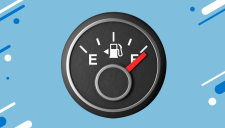Changing jobs: don’t touch your pension

Last updated on 5th December, 2018 at 02:44 pm
Gone are the days when people stayed in one job for life. Job changes should, however, not impact your financial planning.
Career opportunities, especially in the professional market, are keenly pursued and as people move from employer to employer, they sadly often compromise their long-term financial planning by not thinking through all the financial implications. One of the most critical things to consider as you change jobs is what to do with your retirement money. When you leave your current employment, money which you and/or your company contributed towards your pension fund, becomes available to you. You then have the choice of either taking your pension fund money in cash, or reinvesting it in the pension fund of your new employer or in a retirement annuity or preservation fund.
What are your options?
- To reinvest in the pension fund of your new employer
There are a few things you have to keep in mind before choosing this option. Firstly, compare the benefits of the fund of your previous employer with those of the new employer to make sure that you will still be receiving the same benefits. This is particularly important in view of the amount of cover offered under the provisions of the pension fund in question. Is your death benefit the same as the benefit offered by your previous employer? Do you still have life cover for your dependants or spouse? Does the fund offer any disability benefits? Once you have settled all these questions, you can make an informed decision.
- To reinvest in a retirement annuity (RA)
A retirement annuity is a secure and disciplined long-term savings solution which offers a wide range of investment choices. Your investment in an RA can only be accessed at the age of 55 and cannot be attached by creditors. It does, however, have the benefit of potential tax and estate duty savings, as you can deduct your contributions – up to certain limits – from your taxable income, if you choose to continue making regular contributions to the RA. Just keep in mind that most RA funds do not offer death or disability cover.
- To reinvest in a preservation fund
Preservation funds can be a great vehicle to preserve your retirement savings. They offer more flexibility than an RA in terms of access to funds, as you can make one withdrawal prior to retirement, which could be useful in the event of a major financial crisis. Keep in mind that transfers to a preservation fund are also tax free. Also keep in mind that most preservation funds do not offer death or disability cover.
- To take your benefit in cash
This is probably the riskiest option and can be very detrimental in the long run, as you basically have to start your retirement savings again from scratch. This means you would have to save more each month in order to achieve your savings level required at retirement. You also run the risk of losing a huge chunk of your retirement savings to the tax man, and remember that a cash withdrawal is taxed at your average tax rate, which could be close to 41% depending on your taxable income. To be safe, you need a full financial analysis every time you experience a life event (like changing jobs or the birth of a child). So speak to a qualified and accredited financial adviser before you make any decisions about your retirement payout.
Want to learn more?
We send out regular emails packed with useful advice, ideas and tips on everything from saving and investing to budgeting and tax. If you're a Sanlam Reality member and not receiving these emails, update your contact details now.
Update Now







